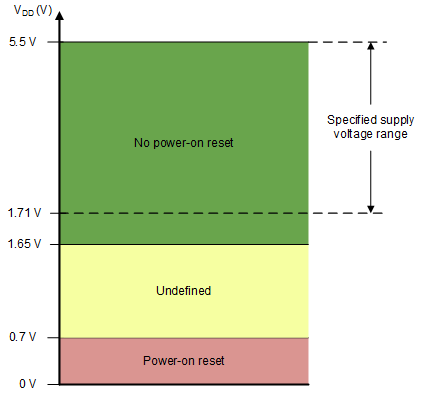SBASAC1A august 2021 – july 2023 AFE439A2 , AFE539A4 , AFE639D2
PRODUCTION DATA
- 1
- 1 Features
- 2 Applications
- 3 Description
- 4 Revision History
- 5 Pin Configuration and Functions
-
6 Specifications
- 6.1 Absolute Maximum Ratings
- 6.2 ESD Ratings
- 6.3 Recommended Operating Conditions
- 6.4 Thermal Information
- 6.5 Electrical Characteristics: Voltage Output
- 6.6 Electrical Characteristics: Comparator Mode
- 6.7 Electrical Characteristics: ADC Input
- 6.8 Electrical Characteristics: General
- 6.9 Timing Requirements: I2C Standard Mode
- 6.10 Timing Requirements: I2C Fast Mode
- 6.11 Timing Requirements: I2C Fast Mode Plus
- 6.12 Timing Requirements: SPI Write Operation
- 6.13 Timing Requirements: SPI Read and Daisy Chain Operation (FSDO = 0)
- 6.14 Timing Requirements: SPI Read and Daisy Chain Operation (FSDO = 1)
- 6.15 Timing Requirements: PWM Output
- 6.16 Timing Requirements: I2C Controller
- 6.17 Timing Diagrams
- 6.18 Typical Characteristics: Voltage Output
- 6.19 Typical Characteristics: ADC
- 6.20 Typical Characteristics: Comparator
- 6.21 Typical Characteristics: General
-
7 Detailed Description
- 7.1 Overview
- 7.2 Functional Block Diagrams
- 7.3 Feature Description
- 7.4 Device Functional Modes
- 7.5 Programming
- 7.6
Register Maps
- 7.6.1 NOP Register (address = 00h) [reset = 0000h]
- 7.6.2 DAC-x-VOUT-CMP-CONFIG Register (address = 03h, 09h, 0Fh, 15h)
- 7.6.3 COMMON-CONFIG Register (address = 1Fh)
- 7.6.4 COMMON-TRIGGER Register (address = 20h) [reset = 0000h]
- 7.6.5 COMMON-PWM-TRIG Register (address = 21h) [reset = 0000h]
- 7.6.6 GENERAL-STATUS Register (address = 22h) [reset = 00h, DEVICE-ID, VERSION-ID]
- 7.6.7 INTERFACE-CONFIG Register (address = 26h) [reset = 0000h]
- 7.6.8 STATE-MACHINE-CONFIG0 Register (address = 27h) [reset = 0003h]
- 7.6.9 STATE-MACHINE-CONFIG1 Register (address = 29h) [reset = C800h]
- 7.6.10 SRAM-CONFIG Register (address = 2Bh) [reset = 0000h]
- 7.6.11 SRAM-DATA Register (address = 2Ch) [reset = 0000h]
- 8 Application and Implementation
- 9 Device and Documentation Support
- 10Mechanical, Packaging, and Orderable Information
7.3.4 Power-On Reset (POR)
The AFEx39xx family of devices includes a power-on reset (POR) function that controls the output voltage at power up. After the VDD supply has been established, a POR event is issued. The POR causes all registers to initialize to default values, and communication with the device is valid only after a POR (boot-up) delay. The default value for all the registers in the AFEx39xx is loaded from NVM as soon as the POR event is issued.
When the device powers up, a POR circuit sets the device to the default mode. The POR circuit requires specific VDD levels, as indicated in Figure 7-5, to make sure that the internal capacitors discharge and reset the device at power up. To make sure that a POR occurs, VDD must be less than 0.7 V for at least 1 ms. When VDD drops to less than 1.65 V, but remains greater than 0.7 V (shown as the undefined region), the device may or may not reset under all specified temperature and power-supply conditions. In this case, initiate a POR. When VDD remains greater than 1.65 V, a POR does not occur.
 Figure 7-5 Threshold Levels for VDD
POR Circuit
Figure 7-5 Threshold Levels for VDD
POR Circuit